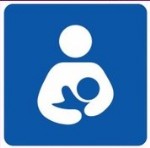Mastitis engorgement
Mammary engorgement
A condition in which more milk is produced than is drained from the infant and these symptoms and signs are present:
- pain
- tense breasts
- more or less reddened breasts
- no milk coming out
- absence of general symptoms
exclusive and on-demand breastfeeding of the infant, regulate milk production in relation to the infant's sucking, therefore are the primary prevention towards engorgement.
Treatment:
see section milk ejection difficulty
Blocked duct
It is a clinical picture similar to that of mammary engorgement; it differs from the latter in that it
- it affects only one breast;
- the pain is localized;
- the breast is hard at the level of the blocked duct and soft for the remaining part because the other ducts are easily drained.
Treatment:
see section milk ejection difficulty
Since the newborn does not effectively drain an area of the breast, try to control the attachment and change position, also, sometimes it can be caused by tight clothing, so wear more comfortable clothing.
Mastitis
Mastitis is an infectious process affecting an area of the breast.
Causes:
unresolved breast engorgement or blockage of a duct
Nipple rash, the lesion can be a gateway for pathogenic germs to enter
Symptoms and signs (usually, affecting only one breast):
- localized swelling and warmth
- severe, localized pain
- high fever > 38°
- general malaise (flu-like syndrome)
Treatment:
antibiotic therapy ( take the drug immediately after the end of feeding to have the lowest possible concentration in breast milk )
analgesics and antipyretics as needed
rest of the mother but not of the breast, do not suspend breastfeeding, it is necessary to resolve the stasis of milk
breast drainage see section milk ejection difficulty
Breast abscess
Abscess is the swelling of a previously inflamed area, characterized by the presence of a collection of pus.
The pus may drain from the nipple or can be treated with guided needle aspiration; in more severe cases, however, an incision and subsequent drainage of the abscess may be indicated.
Do not attach the infant to the breast with the abscess.


